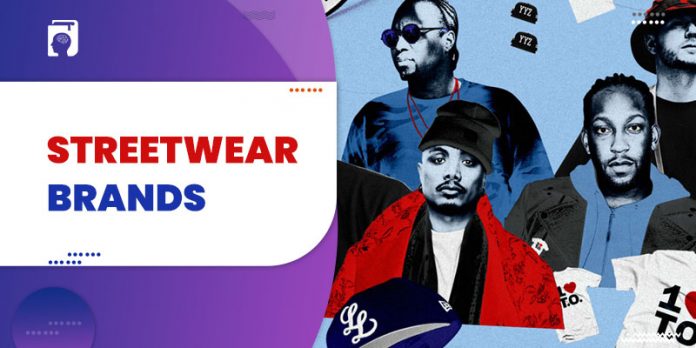With streetwear emerging as the new norm, here’s a detailed list of the best streetwear brands in the world to help you with your fashion choices.
In recent years, we see trends favoring streetwear. Once confined to skateboarders and countercultures, streetwear has made its way into courtside and runways globally. As the trend has penetrated the general psyche, it is endearing across geographies, age groups, and cultures. This fashion revolution allows you to flaunt your style without sacrificing comfort and practicality.
Let’s get a hang of all things streetwear, from definition and origins to the top brands.
What is Streetwear?
Let’s face it. Streetwear style is way too vague, broad, and personal for a definition. It’s individual-specific, guided by the wearer’s style preference, budget, location, and other factors. The do’s and don’ts applicable in other fashion trends are lacking in streetwear. However, those in the fashion world loosely refer to it as casual, contemporary, and cool dressing, distinctive for a comfortable and loose fit, and bold graphic designs. It’s straight out of the street, for the street.
But if you think streetwear is just a way of dressing up, think again. It has way deeper connotations, representing the wearer’s aspirations, ethos, self-expression, and angst against the establishment. Think of it as a youth movement, allowing wearers to feel closer to the beliefs, subcultures, sports, and music they hold dear.
Streetwear put comfort on the fashion landscape and brought the community to the fore. Mind you, each community has its characteristic streetwear style.
Streetwear: A Historical Context
It all began in the 1980s in California where surfing and skating culture runs deep. The bold, at times over-the-top, stickers skaters and surfers used on their boards made their way into their hoodies and tees. A simple act of getting noticed snowballed into a fashion revolution with the advent of MTV. The early adopters were the youths of color and subcultures.
History credits Shawn Stussy and James Jebbia to come up with the first-ever streetwear brands that still continue to rule the roost. As the trend gained traction, top fashion and sports labels jumped into the bandwagon to cash in on the boom. With labels came the traits that a fashion style needs to achieve mainstream acceptance – variety, exclusivity, and status symbol.
In the early 90s, with endorsement from Micheal Jordan and others, sneakers gained ground. The emergence of sneakers completed the look, widened the horizons, and reshaped streetwear style into what we know today. Meanwhile, the style continuously evolved, influenced by subcultures (skateboarders, surfers, punk), music genres (hip-hop, rock, and K-Pop), sports (basketball), cultural icons (superheroes), and, of course, haute couture.
Sportswear: Key Elements
Since streetwear style is an each-to-his-own proposition, rules are non-existent. Feel free to mix and match the following types of clothing for a look that resonates with your personality.
1. Tees
No street look is complete without those oversized tees. Usually printed, they come with eye-catching graphic designs or even graffiti for self-expression. However, plain tees in white, black, purple, and gray colors are also quite popular. While tees stretching to the knees are the norm, shorter sizes are also available. Girls often flaunt tank or crop tops.
Top Brands
| Palm Angels | Dior | Pyer Moss |
2. Jeans
While jeans are central to all casualwear, streetwear takes them to another level with stripped and distressing options. Skin fits represent the streetwear style but relaxed fits and baggies have a following. While 5 pockets are a staple in traditional jeans, streetwear jeans can have more. For the fairer sex, it translates to jeans with trimmed or shredded edges.
Top Brands
| Everlane | Comme des Garçons Homme | Uniqlo |
3. Sweatshirts and Hoodies
Nothing represents streetwear fashion as much as sweatshirts and hoodies. Loose or slim fit, plain or printed, or zippers or pullovers – bring it on. Typically, these pieces of clothing are gender-neutral, save for the color. While men flaunt black, beige, and gray colors, girls prefer deeper shades of purple and pink.
Top Brands
| Gucci | Versace | Balenciaga |
4. Headgear
Whether your version of streetwear is inspired by music or sports, headgear is a staple, protecting hair and head from the elements of nature while also complementing your style. Baseball caps are hands down the most sought-after accessory followed by beanies and bandanas.
Top Brands
| Bailey | Stenson | Loro Piana |
5. Sneakers
Having helped shape the trend, these rubber-soled shoes are embedded deeply in the streetwear juggernaut. As streetwear is big on comfort, function, and style, sneakers are a natural option. Their soft, durable, ergonomic, sporty, and versatile design makes them an ideal companion for running, walking, working out, dancing, or anything else. The appeal of sneakers resonates across all segments of street wearers.
Top Brands
| Nike | Gucci | Prada |
6. Sweatpants & Leggings
Streetwear mainstreamed these casual, soft trousers. Once restricted to comfort and athletic endeavors, sweatpants are everywhere, from haute couture to streets. Think of them as a thicker, warmer, and on-point version of joggers. Bootcut or narrow bottom, full length or cropped, drawstring or elastic cuffs – all are streetwear compatible. Driven by comfort and self-expression, sweatpants are gender-neutral. However, female street-wearers often substitute them with leggings, jeggings, and treggings.
Top Brands
| Moschino | Burberry | Vetements |
7. Jackets
Even streetwear couldn’t stay immune to the lure of jackets. These upper-body garments have evolved in parallel with the evolving fashion landscape and wearer preferences. Field jackets, bomber jackets, trucker jackets, moto jackets, and even shirt jackets, everything goes with streetwear style. The material choices are equally impressive – think wool, denim, leather, and cotton.
Top Brands
| Belstaff | Moncler | Canada Goose |
The Most Desirable Streetwear Fashion Pieces:
The latest study by “Hypebeast” gives us the hang of consumer preferences.
62% of respondents feel that streetwear is here to stay. For an overwhelming majority, sneakers are the most desirable streetwear fashion pieces, followed by tees & hoodies (30%), and accessories (6%).
Sneakers rule the roost when it comes to streetwear. On the last count, the sneaker market was worth USD 85 billion. Come 2026, it will touch the USD 120 billion mark. To what extent sneakers have penetrated the streetwear scene is evident in Hiroshi Fujiwara’s following statement. As one of the pioneers of streetwear style, his observation and opinion matter.
“If you’re talking about the origins, then I think what we call street fashion now has naturally flowed on from skateboarding; but the current reality is different. It feels like sneaker culture now; sneakers and hip-hop culture have become the street culture.”
Why is Streetwear all the Rage?
From fringe to mainstream, streetwear has come of age and found takers across age groups and all ends of the socio-economic spectrum. Let’s explore why.
1. Power to the Wearer
Once, designers, trend forecasters, and magazines dictated what was in and what isn’t. Now, millennials are deciding for themselves, wearing what they find comfortable, stylish, and in line with their attitude. Of late, Streetwear has been leveraging the direct-to-consumer model to democratize access to fashion. Herein, the selling is done directly through social media, minus the involvement of retail outlets.
2. The “Cool” Factor
Casual yet edgy, streetwear presents a cool way to dress up. While designer clothing is still a status symbol, streetwear will get you noticed both in the real and virtual world. A trendy jacket or a tee with a unique slogan or graffiti makes a profound style statement, attracting eyeballs and likes on social media. Mind you, something that trends on social media is “cool” by default.
3. Reflects on your Attitude
Millennials are innately driven towards casual dressing. And, that’s not just for comfort, as attitude and self-expression are also a factor. The careless and free attitude aptly reflects in streetwear’s design and fitting. With not many do’s and don’ts involved, it allows street wearers to wear their attitude on their sleeves while looking effortlessly elegant.
4. Comfort, Comfort & Comfort
Fashion isn’t comfortable and easy to carry unless it’s streetwear. A streetwear piece’s fitting and materials keep you comfortable and cool at home, in the gym, at a music concert, or on the track. Whatever your lifestyle is, streetwear keeps you covered. Rather, streetwear in one word is comfort.
5. Status Symbol
Streetwear comes cheap but not always. With luxury brands like Gucci and Balenciaga unleashing streetwear lines, the streetwear scene has its share of exorbitantly-priced, exclusive pieces. Designer sneakers with a high-end logo will make you feel confident, and heads turn.
6. Sustainability
Fashion isn’t the most sustainable industry out there, accounting for up 10% of the total carbon emissions, consuming excessive water, and polluting water sources. Taking an eco-friendly approach to fashion, streetwear brands are focusing on developing ways to restrict emissions and water usage. With streetwear brands taking the lead, fashion houses are forced to follow suit.
7. Easy on the Pocket
Gone are the days when looking cool involved fortunes. Streetwear provides modish but economical alternatives to democratize fashion to all socio-economic segments. For the cost of a Gucci bag, you can fetch a whole range of street fashion pieces to up your cool game. Even the OGs like Supreme and Stussy are affordable for most while the adopted brands dish out knockoffs of high-end items.
Types of Streetwear Brands
With streetwear on a tear, streetwear brands are mushrooming left, right and center. Some kickstarted the trend, some added dimensions to it, and some just hopped on to it late. Confused? Let’s classify the streetwear brands on their contributions to the streetwear trend.
1. OGs
If streetwear is a force to reckon with, thank them. Brands like Stussy, Supreme, and BAPE not just initiated and shaped the trend but also continue to dominate the market and buyer aspirations. Although these Ogs redefine their designs periodically, their design approach for the most part stays conventional by streetwear standards. The price is higher but not entirely inaccessible.
OGs deliberately limit the quantity of a particular item to maintain a gap between demand and availability. With exclusivity thus maintained their brand recognition and resale value skyrockets. Re-releasing classic sneakers with a few modifications is a common practice for these pioneers.
2. Athleticwear Brands
These brands broadened the horizons of streetwear, making it sports-friendly. In the early 90s, Nike and Adidas unleashed sneakers that gelled with what streetwear stands for – practicality, flair, comfort, and self-expression. With the launch of athleisure, they just helped street wearers elevate their fit game to another level. Their designs are unique but rarely over the top. Despite lacking the OG status, they stick out for their brand recognition and ability to push the boundaries of design, comfort and performance.
3. Adopted Brands
These generic fashion brands jumped into the streetwear bandwagon just for financial gains. They started off as generic fashion brands but shifted to streetwear to cash in on the boom in the early 00s. Lacking innovation in design, their offerings are just a cheap ripoff of trending designs. Some might even roll out the first copies for the gray market.
4. Luxury Brands
They are the new kids on the block, busy rolling out high-end and personalized options for street wearers with a refined taste and higher spending capacity. Call them a cross between OGs and traditional luxury fashion houses. Exclusivity is their forte, maintained through limited product releases. The designs are unique and, at times, outlandish, flaunted by hip-hoppers and sports stars. Their prices are way too high for the common folks.
The Best Streetwear Brands Out There:
What do the brands at the forefront of streetwear have in common? Well, they all are high priests of innovation, quality, and authenticity, and have a deep understanding of the dynamic consumer needs and subcultural styles.
Their offerings effortlessly adapt to all lifestyles, aspirations, and attitudes, allowing wearers to dress to the occasion called life. And, regardless of what you call them, it is impossible to ignore their preeminent position in the fashion psyche.
So, here are the 10 best streetwear brands in the world:
1. Stüssy
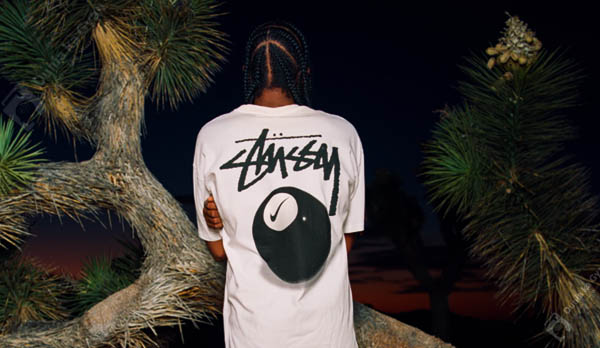
- Since: 1980
- Founder: Shawn Stussy
- Headquarters: Irvine, California,
- Presence: Global
- Owner: The Sinatra Family
- Website: www.stussy.com
Nothing embodies streetwear ethos as Stussy’s groundbreaking and conspicuous designs. What began as a small-time graphic tee brand in the early 80s gradually went on to become the first full-blown streetwear label. It grew in parallel with the streetwear industry, while at the same time, changing the way the world dressed up, for good.
Timeline
1980: Shawn Stussy, inspired by California’s rich surfing culture, sold surfboards inscribed with his surname. Soon, he was vending tees, caps, and shorts bearing the same “logo” in his vehicle across Laguna Beach, California.
1984: Frank Sinatra Jr, joined in. Together, they came up with unassuming stores across NY.
1988: Stussy went international with stores across Europe. The boutique in SoHo also came up.
1992: The revenue hit the USD 20 million mark with the brand going global.
1996: Stussy made an exit, selling his stakes to Sinatra. The company ownership rests with the Sinatra family (as of 2023).
2000: Over-expansion led to a decline in sales, which partially revived in the later years.
2011: The brand teamed up with Marvel to create a tee-line depicting superheroes in Stussy graphics.
2019: It collaborated with Matthew Williams to unleash a t-shirt and hiking boots.
2020: It paired with CDG to birth the commemoratory “Capsule Collection.”
Legacy:
Initially, Stussy was restricted to surfers but gradually gained allegiance from hip hop and punk subcultures. The concept of cross-promotion, which it came up in its heyday, rendered the brand an air of cosmopolitan exclusivity and birthed the “International Stussy Tribe.” It’s a group of like-minded folks with chapters in New York, Los Angeles, Tokyo, London, and Berlin.
Four decades on, Stüssy continues doing what it does best, creating clothing with utmost attention to comfort, flair, and individuality. The compelling concept resonates with everyone, from celebs to the people on the street.
Product Categories:
| Tees | Sweats | Overdyed | Outerwear |
| Tops & Shirts | Knits | Pants | Shorts |
| Denim | Headwear | Accessories | Eyewear |
2. Supreme
- Since: 1994
- Founder: James Jebbia
- Headquarters: New York City
- Total Value: 1 Billion USD
- Owner: VF Corporation
- Website: www.supremenewyork.com
From a modest store on Lafayette Street to the most iconic streetwear brand with USD 1 billion worth and cult status, Supreme has come of age. Backed by an epic focus on quality, style, and authenticity, Supreme leveraged artists’ collaborations to create a top-of-the-mind awareness and a subculture of its own.
Limited product releases helped build brand recognition and staggering resale value. Anything with a box logo, featuring a red background and italic lettering, gains 20X resale value once it’s declared sold out. That’s the power of the brand, making Supreme offerings a worthy investment.
Timeline:
1994: James Jebbia’s entrepreneurial spirit found a definition in a skateboarding store on Lafayette Street in Lower Manhattan. He onboarded the local artists, skaters, and kids to run an expansive store into which customers could skateboard their way in. Later, hoodies, tees, and sweatshirts were put up for sale.
2004: With the “Kanye Effect” kicking in, Supreme branched out to North Fairfax Ave, Los Angeles. It had an inbuilt skate bowl.
2006: It partnered with Nike to unleash Supreme Blazer SB. Costing USD 150, it is resold at USD 400 or above.
2011: Supreme made forays into Europe with a store in London. Stores in Japan also came up short.
2016: The Paris store saw the light of the day, followed by stores in Williamsburg (NYC), Berlin and Milan, and San Francisco.
2017: The Carlyle Group bought about 50 percent stakes in Supreme.
2019: All Supreme decks ever conceived went under the hammer to fetch a whooping USD 800,000.
2021: VF Corporation bought the majority stakes in the company for USD 2.1 billion.
Exclusivity:
Supreme is big on exclusivity, releasing just 2 collections yearly. Also, it implements the “one limit per style” rule, allowing you to buy a piece in just one color. To fetch the other two, you need to make two of your friends stand in the queue. Even who will stand in the queue is decided by the company upon deliberation.
Brand Legacy:
Supreme once catered to skaters, misfits, and downtown scenesters who admired the brand’s caustic graphics and no-frills approach to selling. As of now, Supreme reaches out to an eclectic clientele internationally through 14 outlets and an online store. The brand still holds true to its design credo of authentic and fresh fashion, backed by aggressive marketing.
On its way to glory, Supreme helped create modern streetwear as we know it. As one of the best streetwear brands ever, it stands tall as the fashion industry powerhouse and a proof that you can sell and resell cool as long as it has the Supreme logo on it.
Product Categories:
| Clothing | Shoes | Accessories | Skateboards |
3. A Bathing Ape
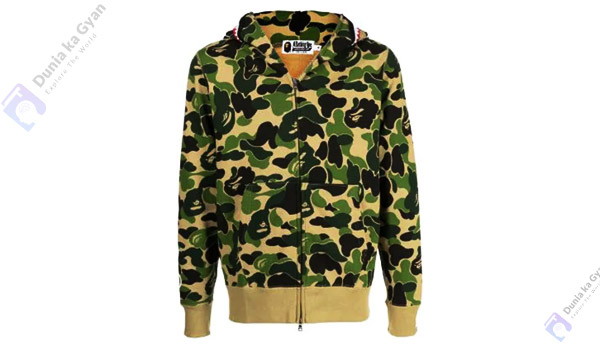
- Since: 1993
- Founder: Nigo
- Headquarters: Tokyo, Japan
- Business Type: Subsidiary
- Owner: IT Group
- Website: www.bape.com
One of the best streetwear brands, A Bathing Ape goes in the streetwear folklore as BAPE. History credits BAPE for pioneering an alternative street fashion, “Urahara” style in the ’90s, which was a blend of American street styles and sportswear with a profound Japanese touch.
The deftly crafted shark hoodies featuring bold motifs, striking colors, and relaxed fitting became a rage among counter-culturists, rendering BAPE a hype that only strengthened with time. With the demand for Bape’s zip-up hoodies and shark t-shirts rising, the brand diversified the product line, rolling out accessories, shoes, bags, and more for him, her, and kids.
A Bathing Ape might sound a strange name for a fashion brand. However, it came from the 1968 Hollywood flick, The Planet of the Apes, and suggests the lazy opulence and overindulgence that characterized the 90’s subculture scene in Japan.
Timeline:
1993: Thanks to Nigo, BAPE burst onto the scene with the first store “Nowhere” in Ura Harajuku. The shoestring budget restricted production to 50 tees a week, which later was adopted as a policy to maintain exclusivity. Nigo’s background in fashion editing and his passion for alternative fashion are reflected in the designs that were well-received by the counter-culturists.
1997: The founder’s first album “Ape Sounds under Mo’Wax” hit the scene. The brand also stocked 40 stores across Japan.
1998: The brand did away with the wholesale operations and converged all attention on the flagship store in Tokyo.
2000: The brand exploded in popularity with celebs, common folks, Hip Hop, and other subcultures embracing it. The likes of Pharrell and Lil Wayne gave it credence in the US.
2011: Hong Kong-based I.T Group bought the majority stakes in BAPE. The ownership hasn’t changed hands since.
Legacy:
BAPE’s sway over the subculture scene declined after 2010. Lately, it made a comeback with Bapestas, a candy-colored take on Nike’s Air Force 1 that’s a staple for today’s influencer class. Despite the ups and downs, BAPE has built a legacy of flashy, cheerful, and oversized designs that have fashion-forward buyers swarming its stores in Japan, the US, Europe, and beyond.
Product Portfolio:
| Clothing | Accessories | Bags | Shoes |
Clothing Lines:
| Coats & Jackets | Jeans | Knitwear | Pants |
| Shirts | Sweats | T-Shirts | Skirts |
4. Palace

- Since: 2009
- Founder: Levent Tanju
- Headquarters: London, England
- No. of Locations: Four
- Total Worth: USD 15 million
- Website: www.palaceskateboards.com
Think of the Palace as the British take on streetwear. It was late to join the party but picked momentum quickly to evolve into a global trendsetter, mainstay of subculture fashion, and one of the most iconic streetwear brands ever. Some even consider it to be the British equivalent of Supreme, inheriting the American counterpart’s aesthetic heritage and evolved design sense. However, while Supreme prefers a box log, Palace uses the Tri-Ferg, a three-dimensional triangle with lettering on each side, to draw attention.
Timeline:
2009: With the assistance of his skate team, Lev Tanju founded Palace Skateboards after spending time designing board graphics. The founder roped in Fergus “Fergadelic” Purcell to design the iconic logo that denotes the infinite, perpetual flow & movement.
2011: The company initially retailed clothing and skateboards through other established outlets across London. By 2011, it was catering to the US market via Supreme stores in NY and LA.
2012: The brand became the proud recipient of the ‘European Skate Brand of the Year in Berlin. Later in the year, it paired with Umbro. Partnerships with Reebok and Adidas followed in 2013 and 2014 respectively.
2015: Finally, the first ever Palace store came up in London.
2017: The first overseas Palace store opened its doors in New York, followed by the third store in Tokyo (2018), and the fourth store on Melrose Avenue, Los Angeles (2019).
Legacy:
Fourteen years down the line, Palace commands unflinching loyalty from celebrities, streetwear enthusiasts, and subcultures, internationally. However, it remains true to its skating roots, creating products that embody skater culture and, at the same time, usher in elements of humor.
The blend of limited availability, smart collaborations and partnerships, and VHS-styled advertising, alongside playful and fresh designs help Palace sell hundreds of thousands of units in seconds. The ludicrous product descriptions still penned by the founder himself are an equally big draw.
Locations:
| London | New York City | Tokyo | Los Angeles |
Product Portfolio:
| Clothing | Shoes | Accessories | Skateboards |
5. Noah

- Since: 2015
- Founder: Brendon Babenzien
- Headquarters: New York City
- No. of Locations: Four
- Website: noahny.com
One of the best streetwear brands, Noah celebrates the confluence of skate, surf, and music cultures, and undying admiration for traditional menswear. Accordingly, with neater and more understated skater aesthetic than other streetwear stalwarts, Noah is the “streetwear for grown-ups.
Timeline:
2015: A brainchild of the Babenzian couple (Brendon and Estelle Bailey), Noah debuted with a flagship store in SoHo, NYC. A former designer at Supreme, Brendon focused on preppy designs that gelled well with an active, engaged lifestyle. Interestingly, Noah was not Brendon’s first label. In 2006, he showcased his debut label at New York Fashion Week. However, he did away with it soon after, for reasons best known to him.
2016 Onwards: The brand branched out to Tokyo with the first international store and catered to LA and London via the Dover Street Market stores. Soon, selling was also done through its official website and the Dover Street Market E-Shop. Strategic collaborations with the likes of Fear of God, Vuarnet, and more helped it catapult into the general psyche.
2022: It paired with Adidas to revamp the classic streetwear sneakers.
Legacy:
Noah was a late starter but made up for it with some stunning designs that merged prep and nautical influences with punk rock and skater subcultures. Their Herringbone pants, double-breasted jackets, corduroy caps, graphic tees, and deftly crafted leather belts are a wardrobe staple across geographies, cultures, and age groups.
However, Noah’s legacy goes beyond the wardrobe, into the factories. The brand’s focus on minimizing abhorrent production practices, responsible sourcing, giving back to the community, and addressing social, economic, and environmental issues is phenomenal, making it a brand with a heart.
Locations:
| New York City | Los Angeles | London | Tokyo |
Product Categories:
| Outerwear | Shirts | Sweatshirts | Sweatpants |
| Surf | Shorts & Swim | Eyewear | Tees & Tops |
| Accessories | Bags | Footwear | Bottoms |
6. Aimé Leon Dore
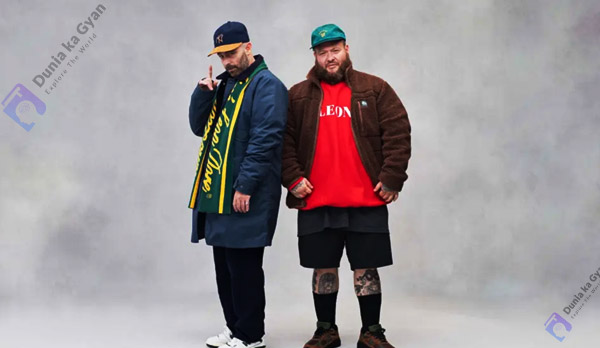
- Since: 2014
- Founder: Teddy Santis
- Headquarters: Queens, New York
- Business Type: Private
- Website: aimeleondore.com
It’s hard to miss Aimé Leon Dore in the New York fashion scene. From runways to the street, it’s everywhere and for everyone who aspires to dress cool. With a flagship store in Manhattan, the brand rolls out ready-to-wear collections inspired by music, graffiti, street dancing, and basketball cultures, and classic European aesthetics. The concoction is just too irresistible for fashion aficionados.
For a generation raised on Supreme, ALD has to be the logical next step. A corduroy suit – created in collaboration with the dashing Brits or the famed Brooklyn tailor Martin Greenfield – appears to be a viable alternative to a bomber jacket in the brand’s cleverly constructed aesthetic. The brand’s creative vision extends beyond its product lines, into the flagship showroom where simplicity and practicality meet preppiness and powerful designs.
Timeline:
2014: Birthed by Teddy Santis, the company was incorporated without a flagship store.
2015: It paired with Puma to revive classic shoes
2016: The first location came up in Nolita, New York, featuring preppy, sporty, and retro motifs, mysterious exteriors, and seasonal interiors. They change whenever the band unleashes a new collection. The store helped ADL to create a community and drive brand allegiance.
2017: The brand partnered with KITH to unleash a nautical-themed collection of tees, pullover sailing jackets, hoodies, and headgear
2019: A specious ADL on Mulberry St opened its doors to the public. Considered to be the world’s most iconic storefront, it features interiors inspired by high-end living spaces and an in-house cafe.
2020 and beyond: ADL continued to boost its brand value and outreach through collaborations with the likes of Woolrich, Timberland, New Balance, New Era, Drake’s, and Porsche.
Legacy:
Teddy Santis transformed his preference for subculture-inspired designs into a force that’s redefining streetwear. His Greek roots and growing up years in New York suburbs still reflect in the brand’s creative vision.
7. Kith
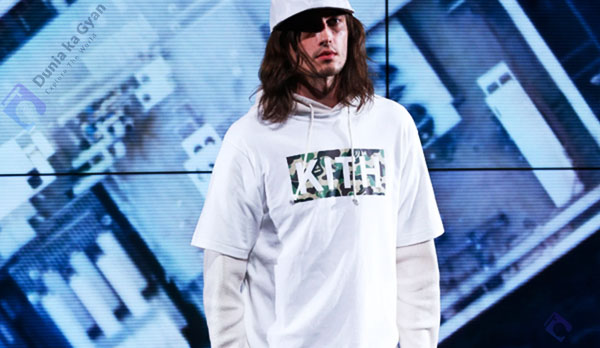
- Since: 2015
- Founder: Ronnie Fieg
- Headquarters: New York City
- No. of Locations: 12
- Website: https://kith.com/
Make way for the disruptor in the streetwear industry, Kith. Contrary to the convention, the brand makes weekly releases and ultra-limited runs to have streetwear aficionados queueing up outside its stores. Add to it the epoch-making collaborations with the likes of Nike and Coca-Cola, Kith has a perfect recipe for a cult appeal.
As one of the coveted sportswear brands in the world today, Kith has built a thriving ecosystem featuring stores, pop-up shops, and a full-fledged restaurant.
The brand operates at two levels – a multi-brand retail chain and a flagship lifestyle brand for him, her, and kids. On the last count, it had a global footprint with 12 locations, each drawing a deluge each time a new collection is unleashed.
The brand roped in Snarkitecture to design many of its storefronts in line with its creative vision and the founder’s credo of giving more to the buyer than what he/she bargained for.
Timeline:
Collaborating with brands that have stood the test of time, Kith aligns itself with brands and ideations from Fieg’s childhood that cohesively formalized the roots of his upbringing. Conceptualizing Kith as an extension of himself, Fieg seeks to shift the current landscape of fashion, while operating under a personal philosophy of giving the consumer more than what they pay for.
In 2015, Kith Treats was conceived from a childhood love for cereal and dreams of one day opening up a cereal bar – now operating in eight locations, Treats has become a staple within Kith. The brand has also extended to three shop-in-shops at Bergdorf Goodman, Hirshleifers, and at Selfridges. Embarking on their journey overseas, they knew it was only right to bring a taste of New York with them; together with Major Food Group, they introduced their first restaurant – Sadelle’s at Kith Paris.
Legacy:
Ronnie Fieg radically altered the retail industry in a little more than a decade, fundamentally affecting how and where young streetwear aficionados bought their goods. Modifying lesser-known Asics shapes as a side gig, he created a global brand with a private label collection that rivals any designer brand it is associated with.
8. Awake NY

Angelo Baque is from Queens, just like Teddy Santis and Ronnie Fieg. He grew up in the world of downtown sneakers and skate culture. And, like Brendon Babenzian, Baque spent some time at Supreme, where he worked as the brand director for ten years before leaving to focus on Awake and a growing list of solo projects.
Awake is a natural result of Baque’s wide range of references, which were influenced by his time at Supreme but did not define it. In any given collection, fuzzy mohair cardigans and nubby overcoats live peacefully with trippy graphic tees and weird embroidered jackets. This is a unique mix that looks more and more like the future of menswear on a large scale.
9. Fucking Awesome
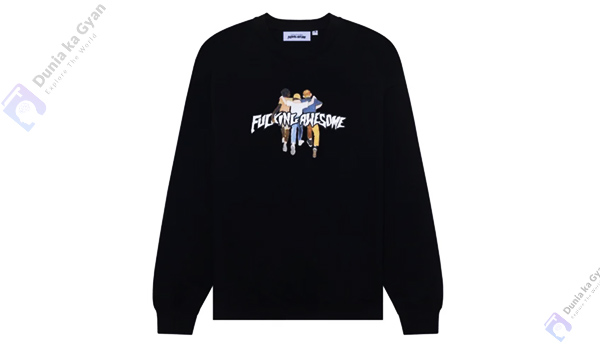
The Jason Dill-led company Fucking Awesome, which has existed in some form for over two decades, does not need to show its skating credentials. This may be why Dill and company often look beyond the sport for inspiration, drawing from a variety of deep cuts to create somewhat bizarro menswear that makes it seem as if they’re having a lot more fun than everyone else.
Any product with the moniker Fucking Awesome must be fun, but FA takes this responsibility seriously. Would you be interested in a pair of lime green pleated cords? For coaches, how about an iridescent jacket lined with fleece? What about a button-down shirt with a huge creepy crawl across the front? FA’s increasing popularity and placement at select retailers such as Dover Street Market suggest we’re not the only ones buying it.
10. Golf Wang
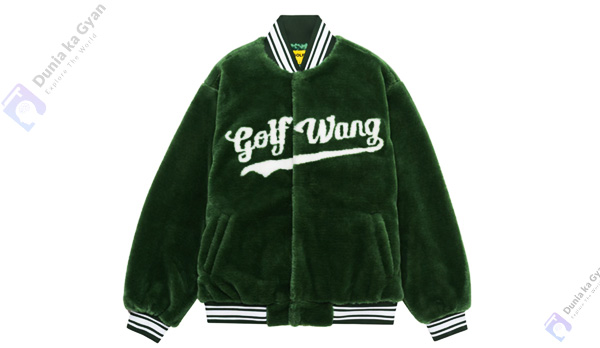
- Since: 2011
- Founder: Tyler, the Creator
- Headquarters: Los Angeles, CA
- Business Type: Private
- Website: www.golfwang.com
When Tyler, the Creator created Golf Wang, many dismissed it as another sloppy celebrity cash grab meant to cash in on the rapper’s fledgling popularity. However, with easy-to-wear and distinctive apparel, footwear, jewelry, and other fashion essentials, Golf Wang changed perceptions and fashion for good. It’s hard to resist the brand’s contemporary designs and vivid visual aesthetic.
Tyler is an absolute aesthetician and Golf Wang’s creative vision revolves around his refined personal style characterized by skate-rat motifs and impeccable fits. Golf Wang is a solid way to check in on one of this era’s defining connoisseurs. Tyler also founded Odd Future Wolf Gang Kill Them All (OFWGKTA) or simply Odd Future, which a musical collective. The brand name is its spoonerism.
Timeline:
2011: Golf Wang saw the light of day, closely associated with Odd Future. Rather, Odd Future was the first to retail Golf Wang’s offerings through a storefront on Fairfax Avenue.
2013: A major collab with Vans unfolded, lasting till 2016. Also, the brand distanced itself from Odd Future.
2017: The brand’s flagship store “Golf” was established at 350 North Fairfax Avenue, Los Angeles. It included an in-premises skating bowl.
2018: It unleashed KAW-CAB sandals in partnership with Suicoke, a high-end fashion brand hailing from Japan.
2019: ‘DEPA-CAB’ sandals ‘GLF Gianno Ox’ silhouette were ushered into the market with different collaborators. The brand teamed up with Lacoste for an SS19 apparel line named ‘GOLF le COSTE.’ Rounding off the year on a high, Golf Wang partnered with Jeni’s Splendid Ice Creams, resulting in ‘Snowflake.’
2020: It paired with Levi Strauss & Co. for their ‘501 day.’
2022: The second retail location came up at 35 Howard Street, New York.
Legacy:
Neither Tyler nor his foundation compromised on authenticity and quality. That’s their legacy, resonating with everyone who wishes to dress sharp.
Product Categories:
| Apparels | Footwear | Accessories |
Conclusion
If you don’t know about the top streetwear brands in 2023, your outfits will never be on point. Streetwear used to be for people who were part of certain subcultures, like skaters, ballers, etc., but now anyone can find brands they like and step up their fitness game.
Supreme is the best streetwear brand in the world when it comes to clothing and choosing different styles. The second brand is Stüssy, whose clothes are very aesthetic and cool in looks with premium quality. A Bathing Ape provides the best streetwear and shoes which you can look into.
People are also reading:



